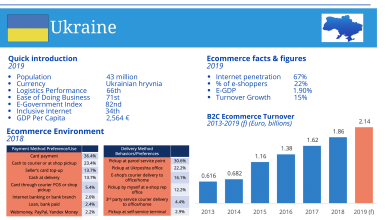When it comes to digital marketing, one of the most common debates revolves around Google Ads vs. SEO. Both strategies are essential for driving traffic, increasing visibility, and boosting conversions, but they work in different ways. One crucial factor marketers and business owners often focus on is the speed of results. In this article, we’ll delve into the key differences between Google Ads and SEO, and ultimately, answer the question: Which delivers faster results?
Understanding Google Ads
What Are Google Ads?
Google Ads (previously known as Google AdWords) is a paid advertising platform that allows businesses to display ads on Google’s search results page, YouTube, and partner websites. With Google Ads, you can create highly targeted campaigns and bid on keywords relevant to your products or services. Every time a user clicks on your ad, you pay a fee—hence the term pay-per-click (PPC) advertising.
How Do Google Ads Work?
Google Ads operates on a bidding system. You bid on specific keywords, and when users search for those terms, your ad may appear in the search results. The position of your ad depends on several factors including your bid amount, the quality of your ad, and the relevance of your landing page.
The Speed of Results with Google Ads
One of the biggest advantages of Google Ads is the immediate impact. As soon as you launch a campaign, your ads can appear within hours or even minutes. Here’s why:
- Instant Visibility: With Google Ads, you don’t need to wait for your site to organically climb the ranks of the search results. Once your ad is live, it can appear at the top of Google’s search results.
- Targeted Audience: You can target specific keywords, geographic locations, demographics, and even devices, ensuring your ads reach the right audience quickly.
- Budget Control: You can start with a small budget and adjust it as necessary, scaling up if you see a positive return on investment (ROI).
Pros of Google Ads for Quick Results
- Immediate traffic: Google Ads can bring visitors to your website the same day the campaign is launched.
- Guaranteed visibility: Your ads are displayed at the top of search results, meaning users see them before organic listings.
- Precise targeting: You have full control over who sees your ads, ensuring your campaign reaches relevant users.
However, the speed and effectiveness of Google Ads come at a cost. You’ll need to constantly manage and optimize your campaigns, and costs can rise quickly depending on the competitiveness of your keywords.
Understanding SEO
What Is SEO?
SEO, or Search Engine Optimization, is the process of optimizing your website to rank higher in organic (unpaid) search engine results. It involves both on-page strategies like keyword optimization and content creation, and off-page efforts like building backlinks and improving site authority. The goal of SEO is to make your website more visible to users who are searching for specific keywords related to your business.
How Does SEO Work?
SEO works by aligning your website with Google’s ranking algorithms. These algorithms assess various factors such as content relevance, website authority, user experience, and site performance to determine your ranking on search engine result pages (SERPs). Effective SEO takes time to implement, but once it gains momentum, it delivers consistent and long-lasting results.
The Speed of Results with SEO
SEO is a long-term strategy, and unlike Google Ads, results are not immediate. It can take weeks, months, or even years for a website to rank highly for competitive keywords, depending on several factors such as:
- Competition: The more competitive your industry and keywords, the longer it will take to see results.
- Current Website Status: If your website is new or lacks authority, it will take time to build the necessary credibility.
- Algorithm Changes: Google constantly updates its algorithms, which can impact your SEO efforts and rankings.
That said, the long-term benefits of SEO are significant:
- Sustainable Traffic: Once your site ranks well, it can continue driving traffic without the ongoing cost of advertising.
- Higher Trust: Users tend to trust organic search results more than paid ads.
- Better ROI Over Time: While it requires time and investment upfront, SEO often delivers better returns in the long run compared to PPC.
Pros of SEO for Sustainable Results
- Cost-effective: Organic traffic is essentially free once you rank well.
- Long-term benefits: Once your SEO strategy takes off, you can enjoy consistent traffic without continually paying for ads.
- Trust and credibility: Organic results are often perceived as more trustworthy than paid advertisements.
However, SEO is not the best option if you’re looking for instant results. Patience is key, as it can take months before you start seeing a meaningful impact.
Google Ads vs. SEO: Head-to-Head Comparison
1. Speed of Results
- Google Ads: Delivers fast results, often within hours of launching a campaign.
- SEO: Takes much longer to show results, sometimes several months, depending on the competition and optimization efforts.
2. Cost
- Google Ads: Involves a pay-per-click model where you are charged every time someone clicks your ad. The costs can quickly add up, especially in competitive industries.
- SEO: While SEO requires an upfront investment in time and resources, the traffic you earn from organic search is free. Once you rank well, you don’t need to pay for every visitor.
3. Sustainability
- Google Ads: The moment you stop paying for ads, the traffic stops.
- SEO: Once you rank, you can enjoy sustained traffic without continual investment.
4. Control and Targeting
- Google Ads: Offers a high level of control over who sees your ads, with targeting options like location, device, time of day, and demographics.
- SEO: You have less control over who sees your organic listings, but you can still optimize for relevant keywords that match your target audience’s intent.
5. Trust and Credibility
- Google Ads: Some users skip paid ads and prefer to click on organic results, viewing them as more credible.
- SEO: Organic results tend to build trust and credibility more effectively over time.
When to Choose Google Ads
If you’re looking for immediate visibility, traffic, and results, Google Ads is the better choice. Here are scenarios where Google Ads shines:
- Launching a new product: If you need traffic fast for a new product or promotion, Google Ads can deliver.
- Targeting a specific audience: The targeting options in Google Ads allow you to focus on specific demographics and locations.
- Short-term campaigns: For seasonal promotions or limited-time offers, Google Ads offers the flexibility and speed you need.
When to Choose SEO
If you’re focused on building long-term success, SEO should be your go-to strategy. Scenarios where SEO excels include:
- Building a brand: If you want to build long-term brand authority and visibility, SEO will offer lasting benefits.
- Gaining organic trust: SEO is the better option for building trust with users who are skeptical of ads.
- Maximizing ROI over time: While SEO takes time, it offers one of the best returns on investment in the long term.
Conclusion: Google Ads vs. SEO – Which Delivers Faster Results?
In the battle of Google Ads vs. SEO, it’s clear that Google Ads delivers faster results. However, that speed comes at a price, and the traffic stops once your budget runs out. SEO, on the other hand, requires patience and effort, but the long-term rewards are worth it.
The best strategy often involves using both tactics together. Google Ads can provide immediate traffic while your SEO efforts build over time. By balancing both, you can drive short-term results with paid ads while setting yourself up for sustainable success through organic search.
Both are crucial components of a comprehensive digital marketing strategy, and understanding how and when to use them can give you a competitive edge.





